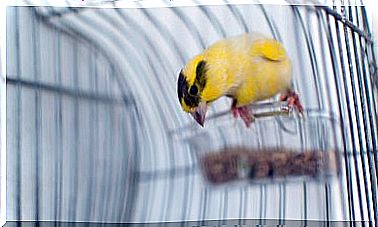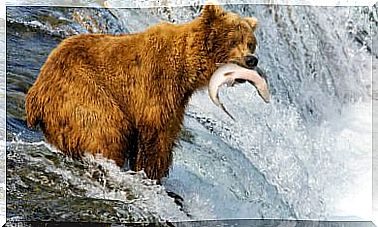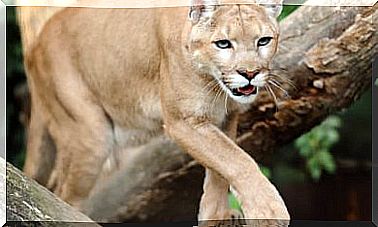Environmental Enrichment In Big Cats
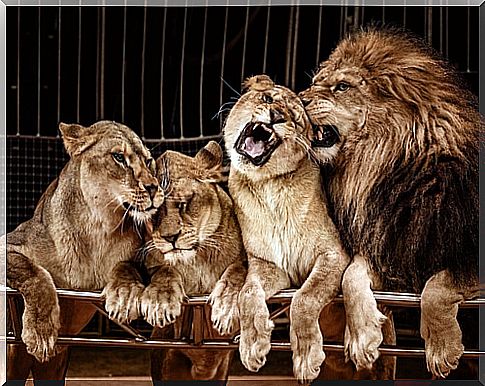
Environmental enrichment in big cats is very diverse. It ranges from facility improvements to applying games or feeding guidelines. In this article we show you everything you need to know about it.
Generalities about environmental enrichment in big cats
Environmental enrichment is the improvement of the quality of life, both physical and sensory, of a group of animals in captivity, for which behaviors and behaviors similar to those of a healthy animal in freedom are recreated.
With this we manage to reduce negative behaviors and behaviors, gestural tics or violent acts against themselves or against the group. Through environmental enrichment we offer regular stimuli so that the animals retain their ability to adapt to changes in the environment without stress, as would happen to them in the middle of nature.

Why is environmental enrichment applied to big cats in zoological centers?
Released felines have little free time, spend their lives looking for food, defending their territory, rivaling other animals of the group in times of zeal, fleeing from predators, etc. That is, they spend all their energy on these tasks, and they take up most of their time and effort. Therefore, in zoological centers the care and environment of the animals must solve most of the needs of this type.
All zoos should include enrichment resources to be able to maintain a balance between the feline’s free time in captivity and occupations, which improves its mental and physical state. This is achieved by providing a complex and unpredictable environment and favoring role models that would be had in nature. This will improve the welfare of the animal and its physical condition.
For the enrichment to fulfill its objective, it is necessary to alternate the games and the proposals, for which an appropriate calendar must be created and, thus, the surprise effect and the novelty are maintained.
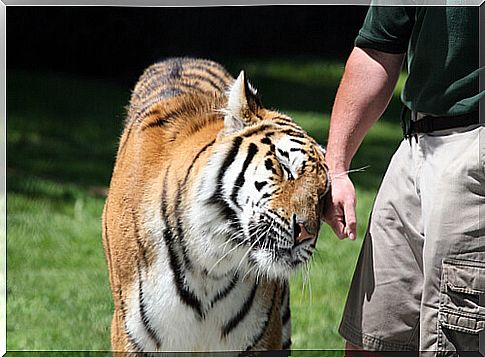
What happens when there is no environmental enrichment?
Stereotypes
The most typical abnormal behavior in captivity are stereotypes. These are behaviors that are fixed in time and space, and without any apparent objective or function.
Some examples in big cats are:
- Repetitive walks.
- Coprophagia.
- Too much grooming.
Types of environmental enrichment in big cats
Physical
It includes the use of:
- Ponds, lakes or pools to cool off.
- Green areas with plants, which recreate their natural environment, which are used for shadows or to hide food.
- Accessories such as ropes, lianas, logs, stones … that are moved from place to place, put on and take off. In this way we promote the instinct of exploration and force the animal to move through different parts of the enclosure.
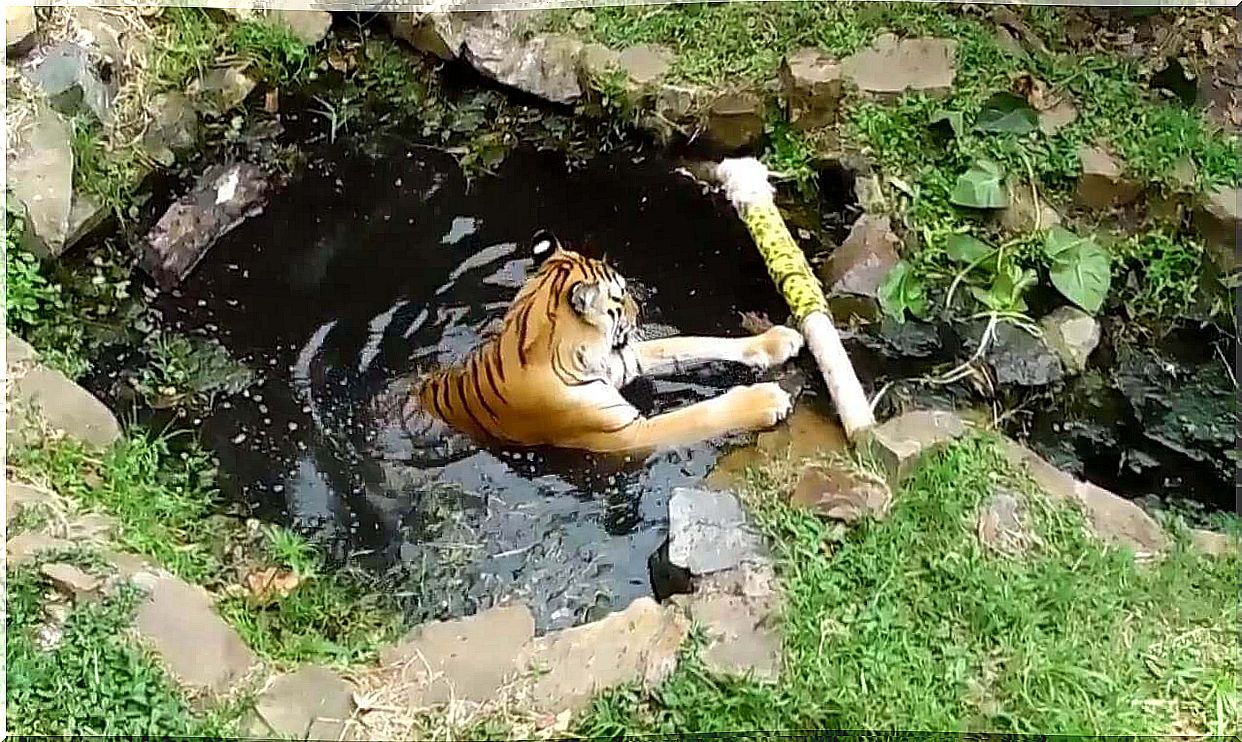
Environmental enrichment in big cats through handling and care
It includes:
- Create new feeding protocols, such as the use of manipulated feeders so that the feline has to strain to get food.
- Changes in feeding times.
- Hide part of the food, distribute it in parts throughout the installation… With this we manage to keep the animal entertained and stimulate its senses.
- Interaction and training sessions, use of positive reinforcement techniques …
Environmental enrichment in big cats through the senses
Nature has endowed animals with senses through which they specialize and adapt to the environment. This sensory world is the one that allows them to smell and track the piece when hunting, to communicate with their peers, to show us their state of mind or to know their environment.
Environmental enrichment can be based on these 5 senses, for example through:
- The introduction of ‘fake’ prey to stimulate stalking and chasing behaviors, for which odorous essences, decoys – feces, hair or meat – are used and thus create a world of odorous sensations.
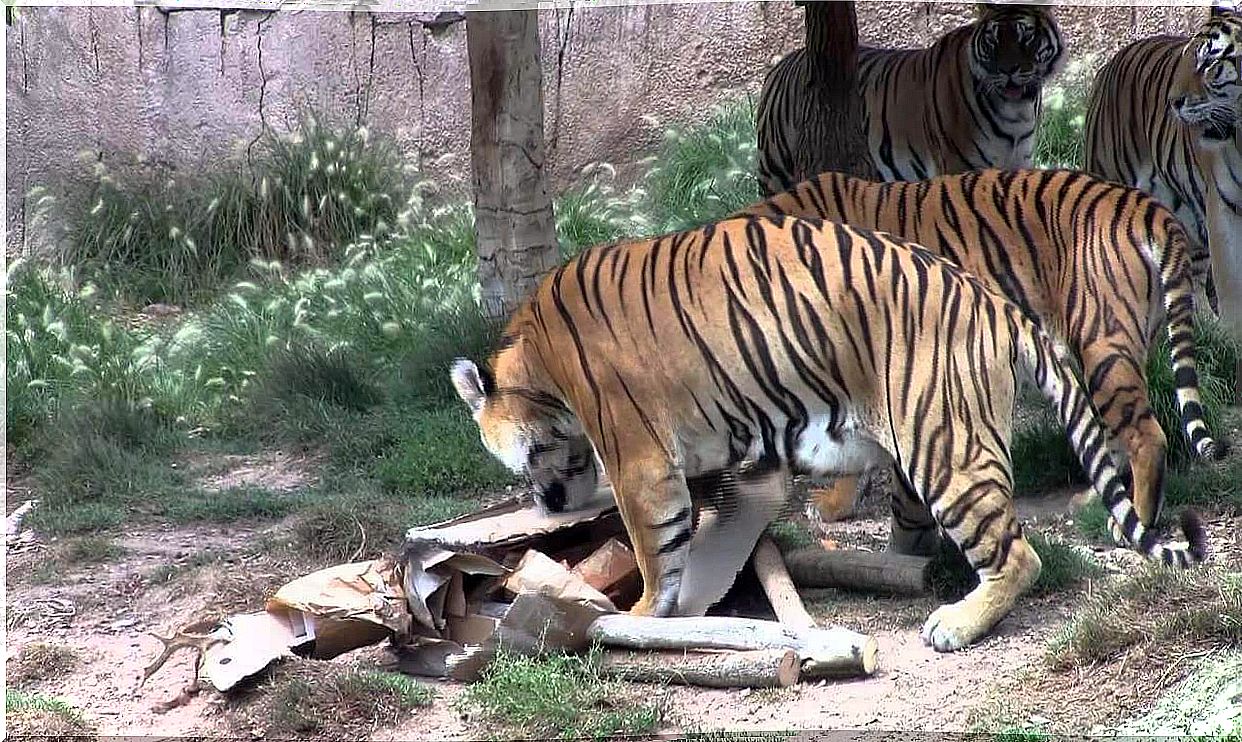
- The development of an auditory environment, which allows them to listen to recordings of natural sounds, which reinforce their natural behaviors.
- Providing high areas from where they can control their environment and, ideally, see other animals of different species, never prey because that would generate a stress difficult to control on both sides.

